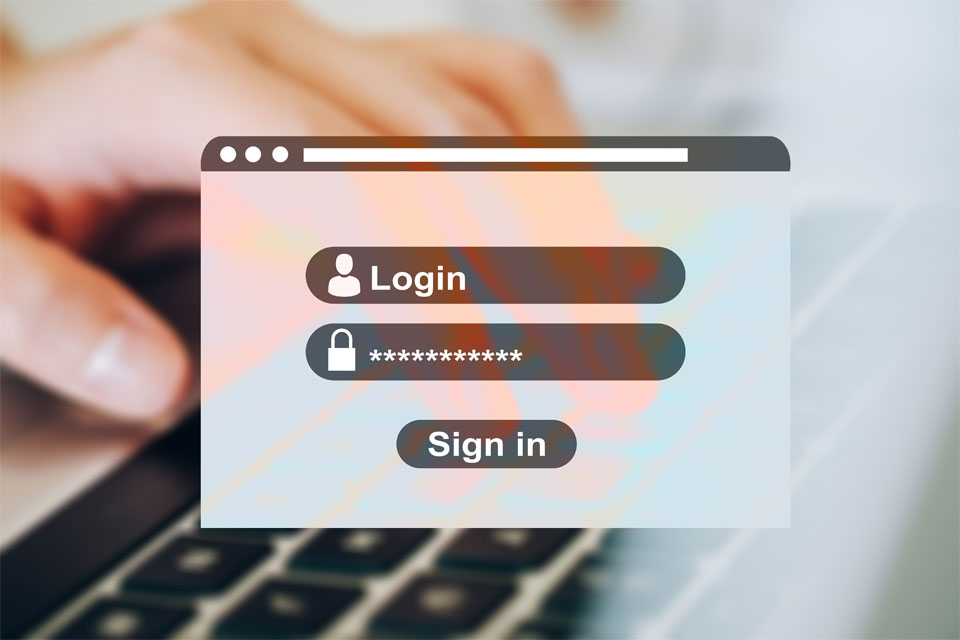How To Change Directory In Terminal On Mac
Zsh Permission Denied Mac
Opening a file in macOS is quite easy. You just need to double-click on information technology — and voila! It shouldn't take long to open a file on your Mac.
Another style to open a file is via Terminal. But run a command and ready the directory where the file is saved and yous should exist able to open up information technology without any hassle.
Unfortunately, that'south non always the case. At that place have been instances when the Terminal is getting the "permission denied" error in Mac when opening a file. A uncomplicated command shouldn't give out this fault. This only means that at that place is something incorrect with either your file or macOS itself.
Some "Permission Denied" Error Examples:
Similar the errors with permissions on Windows devices, the permission denied error on Macs may come with various fault messages. Below are some examples:
- zsh: permission denied: ./foo.rb
- Bash: bash: ./foo.rb: /usr/local/bin: bad interpreter: Permission denied
- aftheers-MacBook-Air:scripts root# ./ArduinoWifiShield_upgrade.sh
- -sh: ./ArduinoWifiShield_upgrade.sh: Permission denied
This is a common mistake that has been hounding Mac users for a long time. It is non something new, but in that location have been several reports recently of Mac users getting "permission denied" error in Mac afterwards upgrading to Catalina and Big Sur.
There are a lot of things that could get wrong when you run a command in Terminal, so encountering this error is not surprising. Merely this error tin can nonetheless exist very annoying, especially if you have no other way to open up the file.
For instance, you want to open a file with no associated programme or does not respond to clicks.
Before nosotros talk over everything about the Zsh permission denied error on the command line of your Mac Bone device, let u.s.a. define the bones terms first.
What Is MacOS Terminal?

Mac'south Final app allows you to do a multitude of things. However, it is widely used to command your device by using various commands.
This app is a Mac command line interface. For some, this may be quite tricky to work with. Just for others, it makes completing tasks a breeze. To employ it, you but have to exist familiar with basic functions and commands and enter them into the control line.
Once you've mastered them, you can dig deeper and explore more than advanced command to complete more complex tasks.
Opening the Last App on Mac
There are two ways to open the Terminal app on your Mac.
via the Applications Folder
This app is located in the Utilities binder under Applications. To launch it, open your Applications binder and select Utilities. Later that, double-click on the Terminal app.
via Spotlight
Alternatively, you tin printing the Command key and the Space bar. This volition launch Spotlight. Here, type terminal and double-click on the search consequence.
Customizing the Terminal App
Now, you volition run across a modest window with a obviously white background. Y'all volition run into your username in the title bar. Besides, the word "bash" and the dimensions of the active window in pixels are displayed.
Should you want to brand the window bigger, simply click the bottom correct corner of the window and drag it outwards.
If you wish to change the colors of the background and the font, open the Shell menu and select New Window. From here, yous can select the all-time option from the list.
Basic Mac Commands You Demand to Be Familiar With

The best and quickest mode to be familiar with the Terminal app is to outset using information technology. But before you can proceed with that, y'all have to be familiar with how to enter a command. Well, that is easy considering you just take to type the command at the control line and hit Return to execute it.
Each command has 3 elements: the control, an argument that tells that control what resource/s it should be running on, and an selection that allows you to alter the output.
For instance, if you lot want to motion a system file from one folder to some other, you accept to utilise the move control "mv" and type the location where you desire to move the file.
Some Advanced Commands to Utilize on the Concluding Command Line
Here are a few examples of more than advanced Last commands:
Copying Files from I Folder to Another
To re-create files from one directory to another directory, follow these steps:
- Type the ditto [folder1] [folder2] command into the command line. Change the value of folder1 to the folder that hosts the current files. Folder2 should be the folder where you desire to move them.
- To view the files beingness copied, blazon -v subsequently the command.
Downloading Files from the Web
To download files from the spider web using the Terminal app, practise the following:
- Open the Last app and type the cd ~/Downloads/ control.
- And then, input this command: curl -O [URL of file you want to download].
Irresolute the Default Location of Screenshots
If you want to change the default location where you want to relieve your screenshots, follow these steps:
- Type this command into the command line: defaults write com.apple.screencapture location [path to folder where you want screenshots to be saved].
- Press the Return central.
- Next, type this control: killall SystemUIServer.
- Hit the Return key once over again.
Changing the Default File Type of Screenshots
If y'all desire to save your screenshots in .jpg format, hither'south what y'all should practise:
- Past default, Mac screenshots are saved using the .png file extension. To alter this to .jpg, type this control: defaults write com.apple.screencapture blazon JPG.
- Press the Return key.
- And then, type this command: killall SystemUIServer.
- Press the Render key one time again.
Deleting All Files in a Directory
To delete folders and sub-folders in a directory, do this:
- To delete all the files in a directory, blazon this command: rm -R directoryname.
- Confirm the deletion by using this control: rm -iR directoryname.
What Is Zsh?
The Z shell or the Zsh is a Unix shell that is designed and built on elevation of fustigate — macOS' default shell. Experts recommend using zsh over fustigate because it is and so much easier to utilize when configuring plugins and themes. Also, its themes look more than beautiful and not bad. Most chiefly, it doesn't crave strict user permissions.
What Is Permission Denied in Last to Open up a File?
Just like what the name says, this is a permission error that prevents Mac users from opening a file using commands. Information technology tin occur with sudo commands or fifty-fifty fustigate commands. According to several reports, the Permission Denied error can also happen fifty-fifty when the file is beingness opened in root.
Most of the reports say that the error appears when they are trying to open up the file installer via Concluding. When the file is dragged to the Terminal window, the "Permission Denied" fault pops upwardly. However, this can also happen with any other file.
Why Y'all're Getting "Permission Denied" Error in Mac

There are many possible reasons why you're getting the Zsh permission denied error on your device. The most mutual ones are as follows:
The File Is Locked
You volition almost likely encounter the "Permission Denied" error if you are trying to install a program or change a file that is locked. It could be because yous do not have administrator privileges or because the creator of the file used chmod to lock the file.
This error is an indication that your command is attempting to write to a directory that your user account does not own.
Bereft File Permission
You can check the permissions of the file in question by typing in ls -l file.ext in the Concluding. The "file.ext" represents the file and extension of the file you're trying to open or modify. You can also try to forcefulness a control that requires administrator permission using "sudo".
Incorrect Chmod X or System Control
Another reason you are getting this error is that you probably entered an wrong chmod x or other system commands.
Check for errors in your syntax and brand sure you're trying to employ the right command. If you're trying to run an awarding, make certain that the program control is valid and installed on your computer.
How to Fix Permission Denied Error in Mac

When yous're getting this mistake, the outset thing y'all need to do is endeavour to open the file using the normal method. Double-click on the file to see if y'all are able to open it. If yous're not successful, then you can try some of the solutions below.
After that, make copies of any relevant files you have. You lot might demand a backup file later in case anything goes incorrect. After all, when you endeavor to force a command to work, there are potential downsides that could mess up your organization and result in more bug. It'due south ameliorate that you lot come prepared.
Also, make sure to optimize your Mac using Mac repair app to prevent other problems from popping up. It would also make clean upward your system to make your processes run smoothly. Once done, restart your Mac and check out our troubleshooting guide.
Step 1: Check your permissions.
As mentioned earlier, this fault ordinarily happens because you practice not have sufficient permissions to access the file. To check whether this is the example:
- Launch Terminal from Utilities.
- Type the following control, and add a infinite later the terminal character. DO NOT press Enter: ls -l
- Elevate the file y'all want to open and drop information technology into the Last window. This will automatically suspend the file's location to the existing control. Still, this will not actually move the file.
- Now click on the Terminal window and press Enter.
This will bear witness you whether y'all have permission to write or modify the file.
Step 2: Modify the ownership of the directory.
Take ownership of the directory with the chown command before attempting to write to it.
Y'all can enter this command in Final, then press Enter: chown -R $USER:$USER /path/to/directory
Alter $USER with the current logged in user and /path/to/directory with the path to where yous desire to write to.
Stride 3: Requite Terminal full access to the disk.
It is as well possible that the Terminal does not consummate access to the deejay, which is why you can't open the file using commands. To prepare this, go to System Preferences > Security & Privacy > Privacy panel, and so add Terminal to the list of apps that are able to control your estimator.
Pace 4: Use SUDO commands.
Sudo may be uncomplicated but it is powerful enough to allow you lot to run commands with administrator privilege. So, if you have encountered denied commands caused by permission bug, then enter sudo.
The sudo control executes the commands that follow its superuser or root privileges. This command should permit you to execute almost any command from the Last. To do this, simply add sudo before the original command. Hither are sample commands:
- sudo chmod 755 /dvtcolorconvert.rb
- sudo chmod 755 ~/Themes/ObsidianCode.xccolortheme
You volition exist prompted to enter your password if this is your first time using the sudo command. But afterward that, you won't have to enter it every time you lot employ a sudo command.
Other Ways to Resolve the Zsh Permission Denied Error in Mac
If you are still getting the Zsh permission denied error on your Mac while trying to open a file on macOS Catalina or other versions, fret not. Here are other solutions you tin can try:
Solution #i: Download Oh My Zsh
Sometimes, the Zsh permission denied fault can be resolved by trying to improve your existing Terminal app. One way to practise and then is past using Oh My Zsh.
Oh My Zsh is an open-source, user-friendly, and community-driven framework that can exist used to manage Zsh configurations on MacOS Catalina or other macOS versions. It comes bundled with various functions, plugins, themes, and other relevant stuff for your macOS device.
Once you lot install this framework, you lot will accept access to hundreds of powerful plugins and neat themes. Your new Terminal app will await customized to your preferences.
To download it, visit the ohmyz.sh website. Once the executable file has been downloaded, install information technology past running this command in your terminal: $ sh -c "$(curl -fsSL https://raw.github.com/ohmyzsh/ohmyzsh/primary/tools/install.sh)".
Solution #2: Configure the .zshrc File
Are you nevertheless seeing the Zsh permission denied error? If that is the example, endeavour configuring the .zshrc file. This file contains the script that is needed to run a new zsh shell. So, if you alter this file, you need to kickoff a new shell for the changes to have effect.
You tin can and so customize your terminal by running the open ~/.zshrc command. This will open the .zshrc file in your organisation's root folder.
Have notation that if you lot are running macOS Catalina or other later versions, you may still go the same Zsh permission denied error. For this, you lot need to configure permissions by opening the file using the chmod +10 ~/.zshrc command.
Solution #3: Change the Theme of the Final App
If you installed the Oh My Zsh framework, then yous can proceed with this solution. Change your current Terminal app'southward theme by using the ZSH_THEME="theme_name" command.
Solution #four: Change the Default Shell of Your Organization

Another manner to get rid of the Zsh permission denied error is to change the default shell of your system. To do this, follow these steps:
- Go to the Apple carte du jour and select Preferences.
- Navigate to Users and Groups.
- Click the lock icon and input your user account name and password.
- Command+Click your user account name from the list of users.
- Cull Advanced Options.
- Select a crush from the Login Shell carte.
- Hit OK to apply your changes.
How to Avoid Permission Issues on Your Mac
To avoid permission problems in the hereafter, you tin always change the permission settings to ascertain who can view and alter files on your device. Below are some ways to do then:
Method #1: Assign Permissions to Users and Groups
You may assign permissions to diverse users and groups to avoid permission issues on your macOS device. Hither's how:
- On your Mac device, choose a folder or directory.
- Go to File and select Get Info.
- If the information is not available, hit the pointer.
- Select a user or group and select a privilege from the pop-up card.
- Hit OK to salve the changes.
Method #2: Apply Permissions to All Items
Apply permissions to all items to ensure they can only be accessed by the correct people. Follow these steps:
- Select a directory and go to File.
- Click Become Info.
- Check the Action Pop-Upwardly card and select Apply to Enclosed Items.
- Hit OK to save the changes.
Method #3: Modify the Particular's Owner
If an detail is endemic by another user, and so you will take problems with its permission. Fix it past doing this:
- Select an item and become to File > Get Info.
- If the name of the new possessor is non in the list, click the Add together push button to add a new owner.
- Choose the new possessor and click the Action Pop-Upwards menu.
- Click Make <new possessor> the owner.
- Apply and save the changes.
Method #4: Add or Remove a User or Group
Calculation or removing a user or group tin besides resolve permission bug. Here'southward how to do so:
- Select an particular.
- Go to File and click Get Info.
- Navigate to the Sharing and Permissions section.
- Select Add a User or Group to add together a user or group or click Remove a user or grouping to remove a user or group.
- Save the changes.
Summary
Getting the "permission denied" error in Mac when yous're trying to access a file is not a huge trouble if you are able to open the said file by double-clicking. However, most of the time, users who feel this error are most e'er unable to open the file using conventional methods.
Since this is a permission mistake, you need to make sure you have plenty privileges to access it. The steps above should guide you on what to practice. This is quite helpful for Mac users who are not familiar with using commands or the Terminal.
To resolve the Zsh Permission Denied error on your Mac, you take to check your file'southward permissions first. It is possible that your current user account has insufficient permissions to access the file.
If that doesn't work, change the ownership of the directory. You tin do this using the chown command.
Also, you tin try giving the Terminal app full access to your disk or utilize the SUDO command to grant superuser or root privileges.
If none of the basic troubleshooting methods work, go along with other solutions. First, endeavor to download the Oh My Zsh framework. This method has worked for many affected users. With this framework, users tin can customize the Terminal app.
Next, you tin can besides try to configure the zshrc file itself or simply modify the theme of the Terminal app. If the fault persists, alter your arrangement'southward default shell.
Now, if you have tried everything just to no avail, seek help from a Mac expert. They can diagnose the problem on your behalf so yous don't take to.
What other Mac-related errors have yous encountered? Allow u.s. know in the comments.

Source: https://softwaretested.com/mac/how-to-fix-permission-denied-in-terminal-mac/
Posted by: bohntheirried.blogspot.com

0 Response to "How To Change Directory In Terminal On Mac"
Post a Comment